If you’re enchanted by the idea of a small, fluffy dog with the striking appearance of a Siberian Husky, the Pomsky might be the perfect canine companion for you.
In this comprehensive guide, we’ll dive into the intriguing world of the Pomsky, covering its history, temperament, health considerations, grooming needs, and more.
- Pomsky is a hybrid of Pomeranian & Husky.
- Pomsky is not an officially recognized breed.
- Health issues may arise from both parent breeds.
- Regular exercise and grooming are needed.
The information provided herein is for informational purposes only. Please refer to our disclaimer for more details..
- History of The Pomsky Dog
- Size and Appearance of The Pomsky
- Breed Temperament of the Pomsky Breed
- Pomsky Health Conditions
- Breed Care and Grooming of a Pomsky
- Training and Socializing a Pomsky – a Pet Parent Guide
- Picking a Dog Breed: Is Getting a Pomsky the Right Thing for You?
- Where To Get a Pomsky
- Conclusion
- Frequently Asked Questions About Pomskies
- Are Pomskies Considered a Purebred Breed?
- How Big Do Pomskies Get?
- What About Pomsky Temperament?
- Do Pomskies Have Health Concerns?
- How Much Exercise Do Pomskies Need?
- Can I Groom My Pomsky at Home?
- Where Can I Find a Reputable Pomsky Breeder?
- Are Pomskies Good with Children?
- Can I Adopt a Pomsky from a Rescue?
History of The Pomsky Dog
Image credit: NoOnions_1984
The Pomsky, a hybrid breed resulting from the intentional crossbreeding of Pomeranian and Siberian Husky, has garnered immense popularity for its captivating appearance. While the Pomsky is not officially recognized as a pedigree, its charming blend of two distinct dogs has made it a sought-after designer breed.
However, while designer pups like Pomsky puppies can be adorable, prospective pet parents should exercise caution. These dogs often have unpredictable traits due to their mixed parentage. Health issues and temperament can vary widely, and ethical breeding practices are crucial to ensure the well-being of both the dogs and their future owners.
Is It Even a Real Breed?
The status of Pomskies as a recognized breed remains a subject of debate. Although there is no formal recognition of the breed, there is a Pomsky Club of America and an International Pomsky Association.
However, a Pomsky won’t be accepted into a kennel club anytime soon, meaning it is a breed that is officially not recognized and is therefore officially considered a hybrid or “designer mix” between Pomeranians and Huskies.
That, however, does not diminish its popularity with dog lovers.
Size and Appearance of The Pomsky
Image credit: lil_lexa
As there is no breeding standard, there is no standard Pomsky and no sure way to determine their appearance. However, most owners and breeders tend to aim for the striking black coat and blue eye combination of the Husky, along with the fluffy expression of the pomeranian coat.
Therefore, Pomskies are typically small to medium-sized dogs, inheriting their striking physical features from both parent breeds.
The double coat, a hallmark of Siberian Huskies, contributes to their plush and fluffy appearance, making them irresistible to many dog lovers worldwide.
Stay tuned as we explore more facets of the Pomsky breed, including their temperament, health considerations, grooming needs, and whether they could be the right fit for your lifestyle.
Breed Temperament of the Pomsky Breed
Pomskies are known for their vibrant personalities, blending the spirited energy of the Siberian Husky with the vivacity of the Pomeranian. While individual traits may vary a lot due to the lack of standardization, common characteristics tend to include dogs that are highly intelligent, playful, and a touch of stubborn.
The Pomsky Temperament
Pomskies are generally social dogs that thrive on human interaction – more so than a Husky and less so than a Pomeranian. They often form strong bonds with their families and can be pretty loyal.
Due to their intelligent nature, they may exhibit a mischievous streak, keeping their owners entertained or sometimes on their toes with their antics.
Pomskies can be pretty vocal dogs if not properly trained, as is typically the case for many small dogs. Dog training should, therefore, be started at an early age to ensure your dog knows when to use its voice and when to keep quiet.
Exercise Needs
Pomskies have a lot of energy, being a mix of energetic Siberian Huskies and playful Pomeranians, and therefore have moderate to high exercise needs. This may, at times, come as a surprise to some owners, as they are not very big dogs.
Daily physical activity is essential to keep them happy and healthy. While each Pomsky is unique, there are general guidelines to fulfil their exercise requirements.
These dogs thrive on a combination of aerobic exercise and mental stimulation. Regular walks, playtime in a dog park, and interactive games help burn off their energy.
Due to their Husky lineage, Pomskies may enjoy activities like jogging, hiking, or even pulling small loads if trained appropriately and otherwise are healthy. Engaging them in obedience training or canine sports can also provide vital exercise for their well-being.
Mental exercises are also crucial, as Pomskies are an intelligent dog and can become bored quickly, leading to undesirable behaviours. Mental exercises can include obedience training, puzzle toys, and similar activities.
It’s essential to tailor the exercise routine to your Pomsky’s age, health, and individual preferences. Monitoring their reactions during activities will help you gauge the right intensity and duration.
As with any dog, a tired Pomsky is a happy Pomsky, so ensuring they get both physical and mental exercise is key to a content and well-balanced companion.
Pomsky Health Conditions
While Pomskies can be healthy dogs, it’s crucial to acknowledge the potential health considerations associated with their unique genetic makeup.
It is a common understanding that pedigree dogs are more prone to diseases; however, this is not always the case. A Pomsky may inherit none of the genetic diseases affecting the two breeds, or it may inherit health issues from either or both the Pomeranian or Siberian Husky side.
Keeping an eye on your dog and ensuring it receives regular health checks at a veterinarian can, however, help keep it happy and with a long lifespan.
Size Discrepancy
Due to the size difference between the two parent animals, Pomkies can be susceptibility to specific health conditions, such as joint problems.
One concern is hip dysplasia, a genetic condition where the hip joint doesn’t fit snugly into the hip socket, leading to potential arthritis. This can result in discomfort and reduced mobility, impacting the Pomsky’s active lifestyle.
Osteoarthritis, another common joint problem, involves the progressive breakdown of joint cartilage. Pomskies, with their combination of Pomeranian and Husky traits, may be prone to joint stress due to size differences between the parent breeds.
Additionally, patellar luxation, a condition where the kneecap dislocates, may affect Pomskies. This can lead to lameness and discomfort. Responsible breeding practices, regular veterinary checkups, weight management, and providing appropriate exercise are crucial for Pomsky owners to help mitigate the risk of these joint issues and ensure their furry companions lead healthy, active lives.
Dental Health
Pomskies are prone to dental problems. These include conditions like periodontitis, a severe concern for dogs, especially smaller breeds like the Pomsky – typically inherited from the pomeranian side. If left untreated, periodontal disease can lead to significant oral and systemic health issues.
Periodontosis, a severe form of periodontal disease, affects the supporting structures of the teeth, including the gums and bones. As the condition progresses, it can cause tooth loss, extreme pain, and discomfort for the dog.
Beyond the immediate oral consequences, untreated periodontosis poses risks to the dog’s overall health.
One of the significant risks associated with advanced periodontal disease is the potential for bacteria from the infected gums to enter the bloodstream. This can lead to systemic issues, including an increased risk of heart disease. The bacteria can travel to the heart and other organs, causing inflammation and potentially leading to more severe health problems.
Regular dental checkups and cleanings are crucial for early detection and intervention in cases of periodontosis. Additionally, maintaining good oral hygiene practices at home, such as regular tooth brushing and providing dental chews or toys, can contribute to preventing the development and progression of periodontal disease in Pomskies and other small breeds.
Breed Care and Grooming of a Pomsky
Image credit: normanthepomsky
When to Brush a Pomsky
Pomskies typically have a lush double coat that requires regular grooming to stay mat free. Brushing a Pomsky’s coat several times a week helps prevent matting and keeps their coat healthy. Due to shedding tendencies, especially during seasonal changes, more frequent brushing might be needed.
This dog need regular brushing, which is why training your Pomsky to accept brushing is crucial for their grooming routine. Start gradually, using positive reinforcement like treats and praise.
Introduce the brush gently, allowing them to sniff and explore it. Begin with short sessions, gradually increasing duration. Reward calm behavior and make it a positive experience to create a bond between grooming and pleasant associations. Consistency and patience are key to developing a positive brushing routine for your Pomsky.
Bathing Routine
Maintain a regular bathing schedule, usually every 4-6 weeks or when necessary. Use a mild dog shampoo to keep their coat clean and healthy.
Remember also to trim their nails frequently to avoid risk of breaking claws and other injuries.
Temperature Considerations
Given the Siberian Husky influence, Pomskies may have a tolerance for colder climates. However, their small size and double coats also make them prone to overheating in warmer weather. Ensure they have access to shade and water during hot days.
Training and Socializing a Pomsky – a Pet Parent Guide
Early Socialization
Ass for all dogs, early socialization is crucial for Pomskies to ensure they grow from cute puppies into well-behaved and adaptable adults. Introduce them to various environments, people, and other animals during their formative weeks.
Obedience Training
Pomskies respond well to positive reinforcement training methods, as well as calm and assertive leadership. Consistent training helps address their intelligent yet sometimes stubborn nature. Incorporate mental stimulation through puzzle toys to keep them engaged.
Interaction with Children and Other Pets
Pomskies, when properly socialized, can make excellent family pets and companion dogs. Supervise interactions with young children, as their energy levels might be too much for smaller kids. Often there are little to no issues with older children. Monitoring their interactions with other pets is, however, equally important with a puppy or adult dog.
Picking a Dog Breed: Is Getting a Pomsky the Right Thing for You?
Image credit: duran_k9_training
Before welcoming a Pomsky into your home, consider several factors to ensure a harmonious fit between your lifestyle and the breed’s characteristics.
Living Space
Pomskies, with their variable size, adapt well to different living spaces. Whether in an apartment or a house with a yard, ensure you can provide adequate space for their exercise needs.
Remember, dogs are individuals, but most Pomskies tend to be vocal, especially around strangers, meaning some dogs may tend to bark in apartments.
Time Commitment
Pomskies are highly social animals, and thrive on attention and interaction from their dog owners. Ensure you have enough time for daily walks, play, and mental stimulation to keep them happy and healthy.
Where To Get a Pomsky
When looking to bring a new dog into your family, you want the best dog. Choosing a reputable source is essential. Start by contacting reputable breeders who prioritize the health and well-being of the animals.
Avoid supporting unethical breeding practices, such as puppy mills and backyard breeders, by thoroughly researching and verifying the breeder’s credentials.
If possible, visit the breeder’s facility and meet the parent animals to ensure they are well cared for. Reputable breeders often want to show off their dogs. Most Pompsky puppies are still bred through natural breeding, although some may use artificial insemination.
Another option is to consider adoption through rescue organizations. Many Pomskies and other breeds find themselves in need of loving homes, and adopting from a rescue can be a fulfilling and humane choice.
When adopting, inquire about the dog’s history, health, and behaviour to ensure a good fit for your lifestyle.
Seeking recommendations from friends, family, current Pomsky owners, and veterinarians can provide valuable insights into reputable breeders or rescue organizations. Responsible and ethical breeding practices contribute to the overall well-being of the animals and help ensure that your new Pomsky is a healthy and happy addition to your family.
Always prioritize the welfare of the animals and support practices that promote responsible pet ownership.
Conclusion
Pomskies, with their captivating appearance and spirited personalities, offer a unique blend of Husky exuberance and Pomeranian charm. As with any dog breed, responsible ownership involves meeting their physical, mental, and emotional needs. Considering the aspects discussed in this guide, you can make an informed decision about whether a Pomsky is the perfect addition to your family.
Frequently Asked Questions About Pomskies
Are Pomskies Considered a Purebred Breed?
No, a Pomsky is a designer breed or “designer dog” created by crossing a Siberian Husky with a Pomeranian. The American Pomsky Kennel Club is looking to have the new breed officially recognized. It is unlikely that this will happen anytime soon.
How Big Do Pomskies Get?
Pomskies’ size can vary, but they typically fall into three categories: toy, miniature, and standard. Toy Pomskies weigh around 5 to 9 pounds, miniature Pomskies range from 9 to 18 pounds, while standard Pomskies can weigh 18 pounds or more.
What About Pomsky Temperament?
Pomskies often inherit a blend of both parent breeds’ temperaments. They are known for being intelligent, energetic, and social. These are active dogs and require socialization and training to ensure a well-behaved companion.
Do Pomskies Have Health Concerns?
Pomskies may be prone to health issues present in their parent breeds, such as dental problems, joint issues, or genetic conditions. Regular veterinary checkups and a healthy lifestyle can contribute to their overall well-being.
How Much Exercise Do Pomskies Need?
Pomskies are an active breed and require regular exercise to stay healthy and happy. Daily walks, playtime, and mental stimulation are essential to prevent boredom and ensure they get sufficient physical activity.
Can I Groom My Pomsky at Home?
Pomskies have a thick double coat that requires regular brushing to prevent matting and reduce shedding. Grooming needs may vary, but weekly brushing and occasional baths generally keep their coat in good condition. You can also take your Pomsky to the groomer if it need to be brushed.
Where Can I Find a Reputable Pomsky Breeder?
Finding a reputable breeder is crucial, especially as it is one of the more popular designer dog breeds. Look for breeders who prioritize the health and well-being of their dogs. Ask for references, visit their facilities if possible, and ensure they follow ethical breeding practices.
Are Pomskies Good with Children?
Pomskies are a breed of dog that are generally good family pets if correctly socialized. Supervision is recommended, especially with younger children, as Pomskies may have varying tolerance levels for energetic play.
Can I Adopt a Pomsky from a Rescue?
Yes, adopting a Pomsky from a rescue organization is a commendable choice. Check local shelters or breed-specific rescue groups for available Pomskies.
129views
Share on FacebookIt is not a recognised breed. It's a mongrel. There's nothing wrong with it being a mongrel. There is nothing wrong with mongrels at all. I wish these so caller "designer breeds" would stop being passed off as being a fancy new breed of dog when in reality dogs that should not be bred with one another are being done so, not to inprove a breed, but entirely for monetary gain.
It is not a recognised breed. It's a mongrel. There's nothing wrong with it being a mongrel. There is nothing wrong with mongrels at all. I wish these so caller "designer breeds" would stop being passed off as being a fancy new breed of dog when in reality dogs that should not be bred with one another are being done so, not to inprove a breed, but entirely for monetary gain.
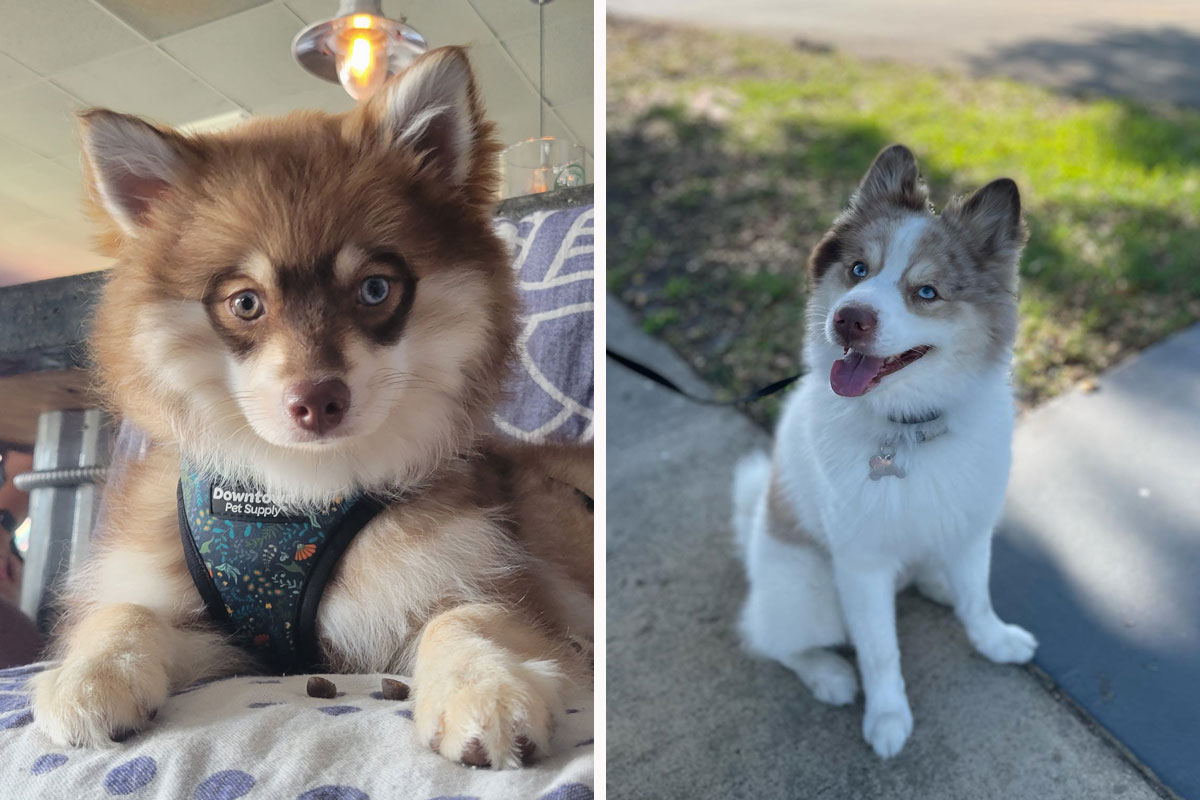
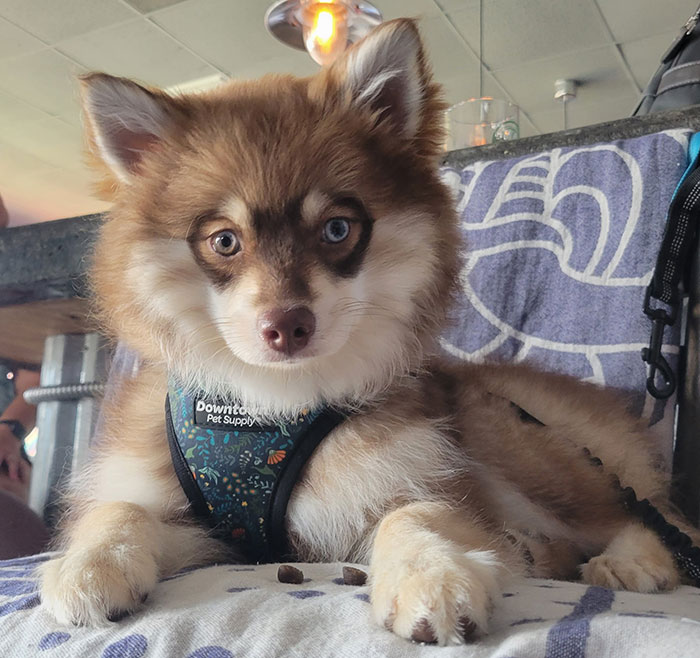
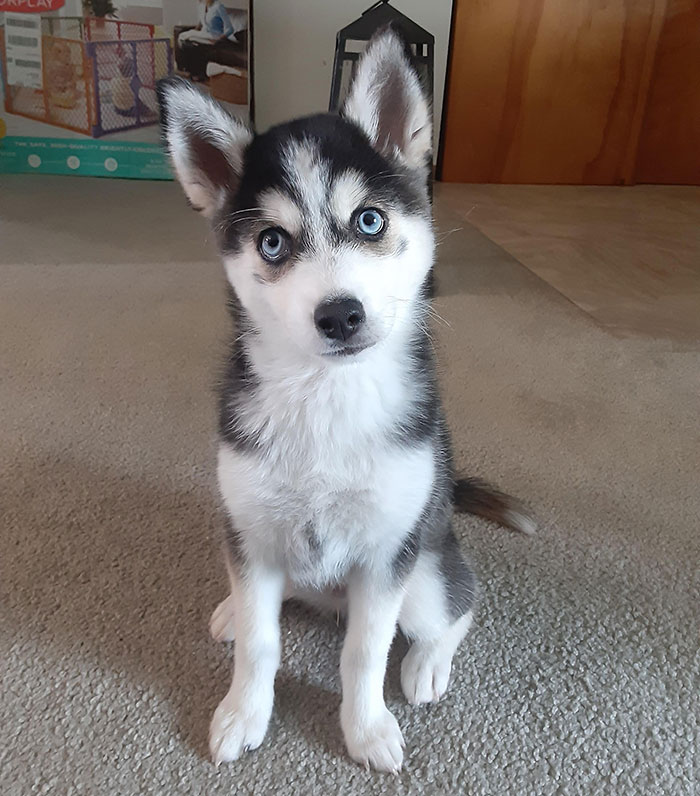
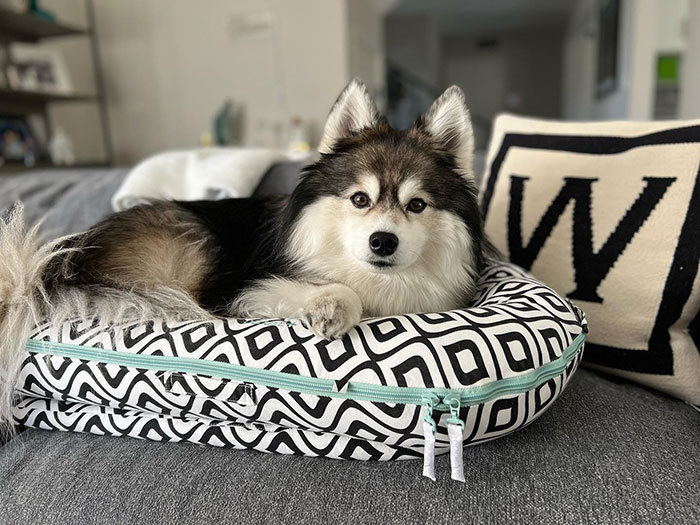
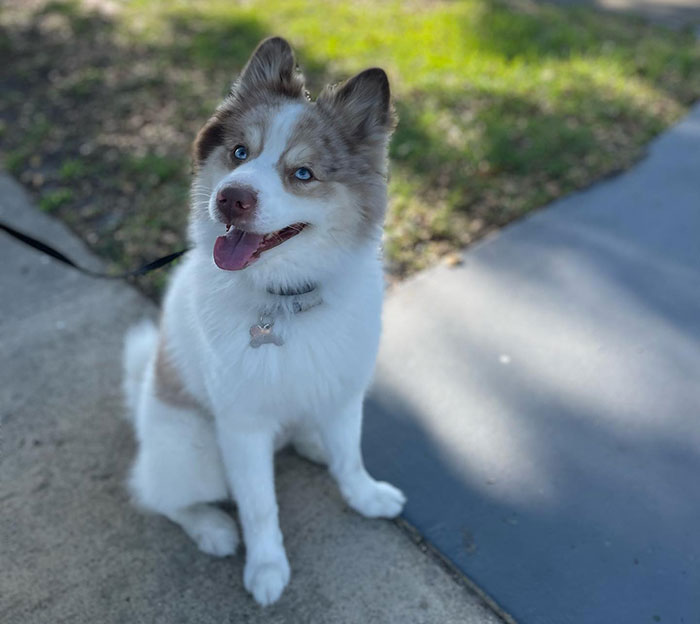



-3
1